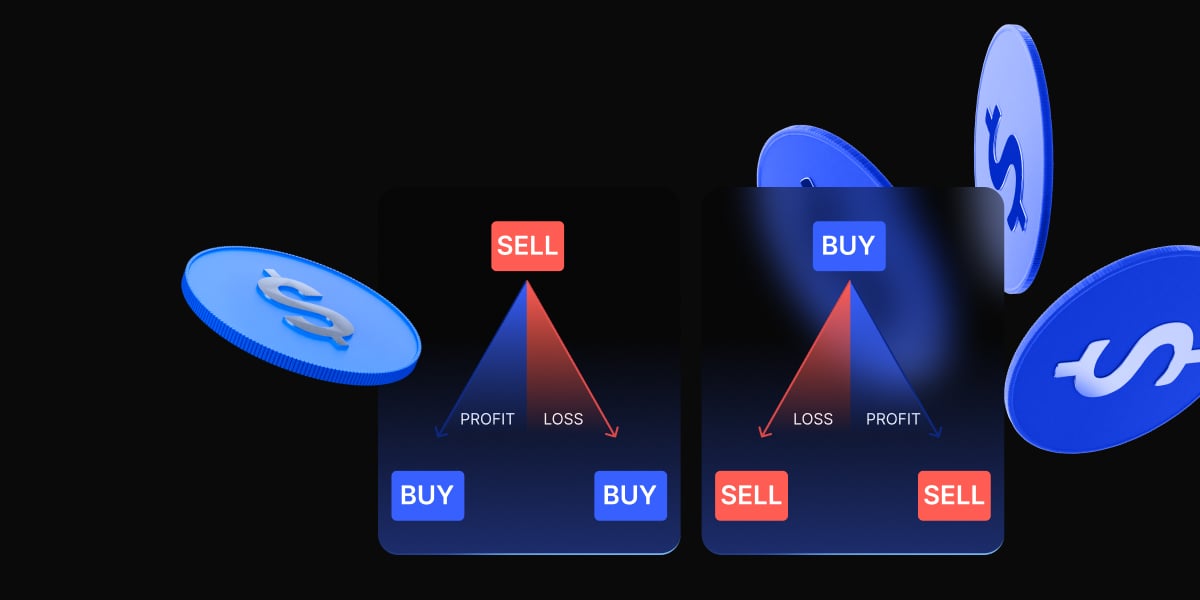The Bitcoin price reached an incredible $123,150. This surge was driven by the massive success of spot Bitcoin ETFs, which attracted billions in inflows and cemented BTC’s reputation as a legitimate asset class. Institutional adoption, political momentum in major economies, and increasing retail participation further accelerated this rally, pushing Bitcoin firmly into mainstream finance.
The latest rally was significantly fuelled by the launch of Bitcoin exchange-traded funds and growing regulatory clarity worldwide. These factors have both increased the number of BTC buyers and pushed Bitcoin back into the spotlight across global media, skyrocketing the price beyond $123,000. Many investors are now asking: when will the next record high come?
In this article, we will look at the factors behind the current cycle, analyse the drivers of recent price action, and explore what investor sentiment and market data suggest about the timing of Bitcoin’s next potential peak.
Driving factors for the new all-time high
There are a few factors driving Bitcoin’s current record high prices. At the moment, the Halving is absolutely fueling this trend, and the latest Bitcoin exchange traded funds have also boosted both exposure and demand for the king of Cryptos. Let’s take a bit of a more detailed looked at both of these.
Halving
Halving happens around every four years, which roughly equates to 210,000 blocks, and is Bitcoin’s anti-inflation mechanism, artificially creating scarcity. It works by halving the amount of BTC awarded to miners for every block of validated transactions added to the blockchain. Like clockwork, every time this has happened, it has triggered a surge in the price of BTC.
The dynamics behind this are simple: the supply of BTC is cut in half, but demand remains steady—or even increases. More demand and less supply almost always drives the value of an asset higher. A bit of a heads up, though: the effect isn’t immediate; it usually takes between a year and a year and a half for the halving to fully reflect in the market.
The first halving in November 2012 saw BTC priced at $13, and by November 2013, it had skyrocketed to $1,100. The second halving in July 2016 brought BTC from around $650 to nearly $20,000 in December 2017. The third halving in May 2020 pushed BTC from $8,600 to an all-time high of $69,000 in late 2021.
The most recent halving occurred in April 2024, reducing the block reward to 3.125 BTC. Since then, Bitcoin’s price has surged to new heights, reaching over $123,000 by mid-2025. Unlike previous cycles, this rally has been amplified by institutional players and whales managing spot Bitcoin ETFs, many of whom likely priced the halving into their strategies ahead of time.
BTC Spot ETFs
Spot Bitcoin ETFs are managed funds that hold assets and allow clients to trade the price of said asset without the obligation actually to own it. These Bitcoin ETFs are available to trade on most mainstream exchanges, not just a Crypto exchange, Coinbase, for example, and are regulated by the Securities and Exchange Commission, giving an added security layer. But this also puts huge amounts of BTC in the hands of big brokers like Blackrock, which offer Spot Bitcoin Exchange Traded Funds, increasing the chance of moves made by algorithmic and automated trading (which many of these brokers use).
Bitcoin all-time highs so far – Bitcoin price history

The first BTC Crypto rally happened very early on when it jumped from a conservative $0.09 in 2011 to an astounding $26.90, marking a 2960% increase. In 2013 the Crypto saw its highest price yet, hitting an almost unbelievable (at the time) $1238. After a cool off, it climbed year over year, reaching $20,000 in May of 2019. After dropping slightly, it added 416% to its value in 2021 almost reaching $30,000. Later that year, it almost touched the $70,000 point and of course most recently also approached that mark. In retrospect and considering we’ve already seen these movements, each saw a striking distance from their previous high making it one of the World’s largest Crypto…in fact it made it the world’s biggest gaining asset in all of history.
In 2024, Bitcoin broke past its previous all-time high and surged above $75,000, driven by the approval of spot Bitcoin ETFs in the United States and increasing institutional adoption. By mid-2025, it shattered expectations again, climbing to over $123,000 as mainstream acceptance deepened and global regulatory clarity improved.
Market reactions to Bitcoin’s new all-time high
Bitcoin recently surged past its previous high, reaching approximately $123,150 on 14 July 2025, before stabilising around $120,000—up nearly 30% in 2025, fuelled by strong institutional demand and regulatory clarity.
Institutional interest played a pivotal role. Spot Bitcoin ETFs have accumulated over $14.8 billion in net inflows this year—outpacing 2024’s pace . Major firms like BlackRock and Fidelity continue to drive these inflows, with daily peaks exceeding $1 billion during key market moves.
Meanwhile, Bitcoin has benefited from Crypto Week in the U.S., where Congress advanced critical digital-asset legislation—including the CLARITY Act, GENIUS Act, and Anti-CBDC Surveillance State Act. This political momentum bolstered market sentiment, pushing prices above $123K.
Adding further legitimacy, the U.S. government’s establishment of a Strategic Bitcoin Reserve with around 200,000 BTC lends strong symbolic and institutional backing to Bitcoin’s value proposition.
These converging forces—from ETF inflows and macroeconomic trends to regulatory progress and national-level holdings—suggest the once speculative asset is increasingly viewed as a mainstream financial instrument, supporting projections of Bitcoin reaching $150K+ later this year.
Institutional and retail investor response
Since the launch of spot Bitcoin ETFs in early 2024, investor sentiment towards cryptocurrencies has shifted dramatically. By July 2025, ETF inflows surpassed $4 billion in a single month, with total net inflows for the year exceeding $55 billion, underscoring the scale of institutional interest.
Despite this ETF boom, institutional ownership remains relatively modest: less than 6% of Bitcoin assets are held by long-term investors such as pension and sovereign wealth funds, while 15–18% are controlled by hedge funds and wealth managers. The majority of Bitcoin continues to sit in the hands of retail investors. Notably, companies like MicroStrategy and Tesla have expanded their Bitcoin holdings as part of treasury strategies, and more Fortune 500 firms are beginning to follow suit.
Retail participation has also grown significantly. Exchanges like Coinbase now report serving over 110 million customers worldwide, making cryptocurrency investments increasingly accessible through both mainstream financial markets and ETFs. The availability of these regulated products has made it easier for everyday investors to gain exposure to Bitcoin without navigating the complexities of direct crypto ownership.
Impact on Crypto-related Stocks, ETFs and companies
Obvious this latest rally has been extremely beneficial to all providers both within the Cryptocurrency space and the ETF space. On the news of the new high, many exchanges saw an uptick of traffic and of course brokers that offer Bitcoin ETFs saw the assets they manage grow in value exponentially.
Bitcoin’s growth compared to other assets
Bitcoin vs traditional investments
One of the highest growing Stocks over 10 years only saw an 83.80% increase (Waaree Renewab.). Bitcoin on the other hand has experienced a 17429.42% increase since 2014 highs until today. I doubt any further comparison is necessary.
Emerging trends in Crypto investment
The Bitcoin ETFs were only the beginning. Now that the financial industry has accepted Cryptocurrencies’ viability, there are bound to be other mainstream investments based on Cryptos. Networks that allow smart contracts , including Bitcoin, are also offering alternatives to mainstream banking and investment services via DeFi solutions.
Future outlook for Bitcoin and the Cryptocurrency market

Expert Bitcoin price predictions and analysis
Analysts at Bernstein project that Bitcoin could soar to staggering heights of $150,000 by late 2025, driven by a wave of institutional capital flowing through spot ETFs and the impact of the most recent halving event. They anticipate this cycle’s peak will occur in 2025, slightly later than the commonly expected timeline of 2024.
The halving, hardcoded into Bitcoin’s protocol, ensures scarcity by cutting the rate of new Bitcoin issuance by half approximately every four years (or every 210,000 blocks). This mechanism will continue until Bitcoin’s maximum supply of 21 million coins is reached, which is expected around 2140.
Morgan Stanley supports a similarly optimistic outlook, suggesting that the “crypto winter” is giving way to a “crypto spring.” They point to historical patterns where Bitcoin rallies significantly following halving events, reinforcing the potential for strong upward momentum in the current cycle.
On the other hand, JPMorgan offers a more cautious perspective. While acknowledging the success of spot Bitcoin ETFs, they warn that rather than attracting substantial new capital, these products may simply reallocate funds already invested in other Bitcoin vehicles, such as trusts and futures-based ETFs.
Innovation and adoption of BTC
As mentioned above, numerous factors are fueling Bitcoin’s adoption, primarily institutional interest and the relatively new exchange-traded funds. Regarding innovation, most Cryptocurrency networks are constantly looking for ways to add functionality and the ability to scale their networks, which will inevitably benefit investors.
The content provided here is for informational purposes only. It is not intended as personal investment advice and does not constitute a solicitation or invitation to engage in any financial transactions, investments, or related activities. Past performance is not a reliable indicator of future results.
The financial products offered by the Company are complex and come with a high risk of losing money rapidly due to leverage. These products may not be suitable for all investors. Before engaging, you should consider whether you understand how these leveraged products work and whether you can afford the high risk of losing your money.
The Company does not accept clients from the Restricted Jurisdictions as indicated in our website/ T&C. Some services or products may not be available in your jurisdiction.
The applicable legal entity and its respective products and services depend on the client’s country of residence and the entity with which the client has established a contractual relationship during registration.




